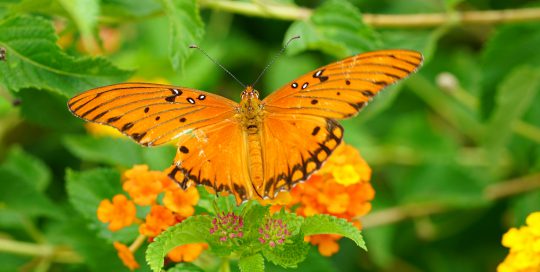Plant Some Fall Color in Your Own Garden
By Jean Starr
Ginkgo
You can easily find this ancient Chinese tree at nurseries. Many U.S. cities plant it as a street tree. According to the International Union for Conservation of Nature, wild populations of Ginkgo are apparently confined to a mountainous area in the Zhejiang Province of China. It is long-living and has an ancient geological record, appearing in the Jurassic.
When you think about how long this tree has been around, it becomes obvious there is something very sturdy and adaptable about Ginkgo, or maidenhair tree. It’s unattractive to most insects. Additionally, it’s able to survive in adverse environments that include road salt and compacted roots. Ginkgo biloba is so much more than a magic memory drug. It’s a very slow-growing tree, so there is little problem fitting one in any landscape. If you like things to stay really small, there are dwarf varieties available. Just one of the most recent is Ginkgo b. ‘Troll’ (Chris’s Dwarf), with tightly-packed half-sized leaves and a height of less than three feet in 10 years. It is hardy to USDA zone 4.
Witch hazel
Unassuming in summer when other plants are busy putting on a show, witch hazels gear up for a time when little else is blooming, sometimes as early as February. Ozark witch hazel (Hamamelis vernalis), a native to North America, is incredibly easy to grow, and very carefree if you have the space for this potentially 20-foot shrub. Its flowers are hard to spot but easy to catch scent of, especially with snow on the ground. A feast for the eyes in fall, Ozark witch hazel’s leaves turn a not-to-be-ignored golden yellow.
The hybrid witch hazel ‘Diane’ has early flowers that aren’t as fragrant as the Ozark type, but they are slightly larger and deep red, making them much more visually noticeable. Its leaves are the same golden yellow in fall, sometimes crossing the line into russet.
The only drawback to these varieties is the fact that their dried leaves don’t drop, making it harder to spot the flowers and arguably detracting from the early spring show. Hardy to USDA Zone 5.
Hydrangeas: Oakleaf and Panicle
Oakleaf Hydrangea (Hydrangea quercifolia) is known for its colorful, oak-like leaves in fall. They are proceeded by huge heads of white flowers that gradually change to rose. Unfortunately, it’s also known for its lanky size and possible loss of flower buds in late spring frosts. It can be ungainly and disheveled-looking in the winter landscape. However, internationally recognized Hydrangea expert Michael Dirr says any drawbacks are as easily forgiven as for the puppy who chewed the slippers because there is so much to love.
Varieties of this American native range from as small as just four feet tall to eight feet with nearly as broad a spread. There are several that will fit into the home garden, including ‘Munchkin’ (3 feet tall by 4.5 feet wide), and ‘Ruby Slippers’ (3.5 feet tall by 5 feet wide), two recent introductions developed by the National Arboretum’s worksite located in McMinnville, TN. Hardy to USDA Zone 5.
While most panicle Hydrangeas are known for their late summer-early fall flower display, two step up to the plate with colorful fall leaves. Hydrangea paniculata ‘Quickfire’ and its diminutive cousin, ‘Little Quickfire’ not only bloom a bit earlier than many other panicle hydrangeas, but their leaves turn a nice bronzy color in late fall. You can prune Panicle Hydrangeas in the spring for blooms later in summer. This is especially good in climates that can experience late spring frosts. Hardy to USDA Zone 4.







